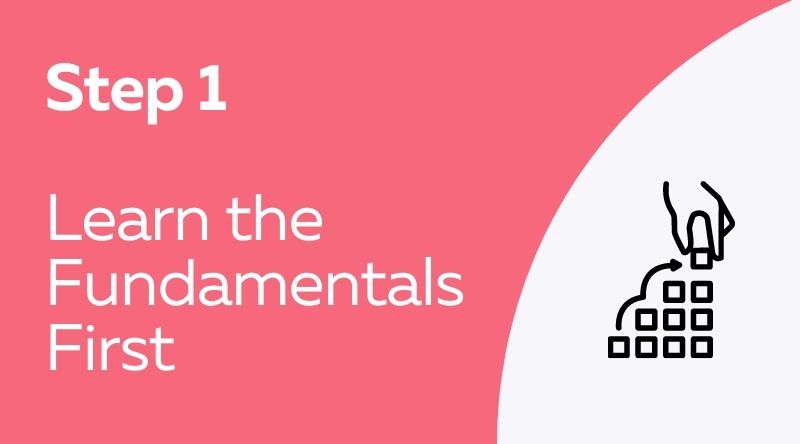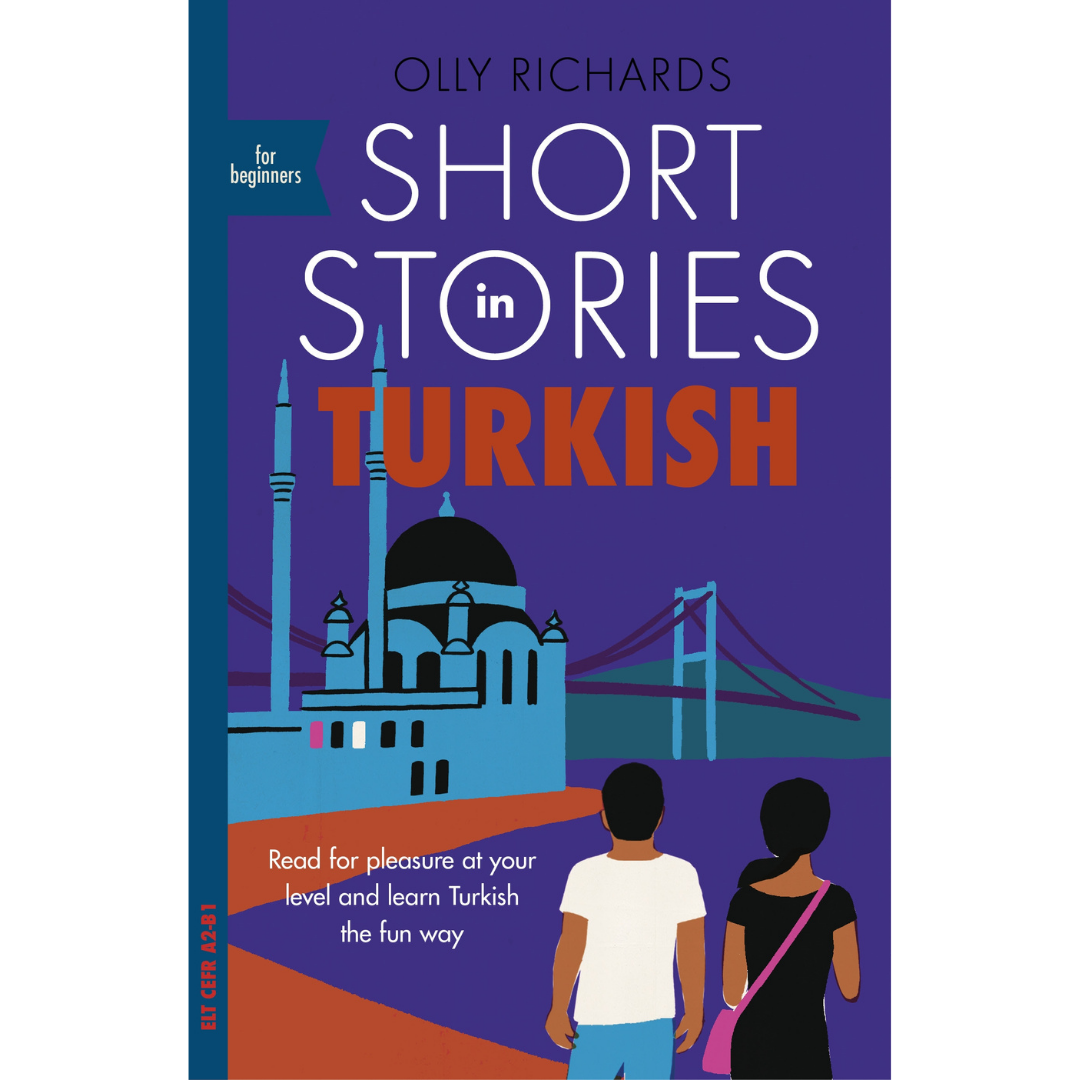Learning Turkish is one of the most exciting and rewarding things you can do.
While you might get some mixed feedback from friends and family who are wondering why you are spending your time on a language so different from English, the many benefits are worth whatever flack you get for it.
To be sure, Turkish is different from English and progress can seem slow at first. But if you persevere, before long you will realise you are starting to understand this exotic and beautiful language.
And while there are plenty of differences you need to be aware of, there are also some things about Turkish that make learning it easier for English speakers than it is for speakers of other languages.
In this article, I will answer some of your questions about learning Turkish and even give you some insight into what you need to know to make your Turkish learning journey as successful and enjoyable as possible.
Pro Tip
By the way, if you’re looking for the best way to learn Turkish fast… then look no further than Turkish Uncovered. Turkish Uncovered is an exciting online Turkish course I’ve created teaches you Turkish naturally through the power of story. Click here to find out more and for a free 7-day trial of the course.

Here’s what we’ll cover in this article…
These are some of the most common questions new Turkish learners ask themselves. To best answer them, I have broken down the article into sections based on these questions. If you have a question, you are particularly interested in, you can click on it below to jump ahead to that question.
If you’ve ever asked yourself any of the following questions, then this article is for you. If you want to skip ahead, just click the section that interests you.
Table of Contents
I will start with Turkish culture, then move into more technical parts of learning the language. Finally, I will end by giving you some resources to help you get started learning Turkish today.
And again, don’t be intimidated by the length of this guide. The PDF version is available for free so you can download and read it at your own pace.
Because this post covers everything you need to know as a beginner, it’s quite long! I’ve also prepared a special PDF version of the post so you can download it and read it anywhere, anytime.
Click here to grab your copy now! (It’s free)
Why Learn Turkish?

There are many good reasons to learn any language and Turkish is no exception. Because of this, I will start with the more general reasons and then move toward reasons that are more specific to why you should learn Turkish.
1. Learning A Language Is Good For Your Brain
It almost goes without saying that learning a language is good for you. Learning new vocab words and grammatical structures is a great way to keep your brain sharp. It also beats wasting your free time on things like binge watching whatever show is the latest craze on Netflix.
And as you learn your second language you are putting a deposit down on future languages. The third and fourth languages will be even easier than your second. So you might as well get started now.
2. There Are Millions Of Turks All Over The World!
There are millions of Turkish speakers all over the world so whether you plan to travel to Turkey or stay closer to home, you won’t be short of people to practise with.
The U.K., especially London, has a robust Turkish population that is active and growing. While you can no doubt strike up a friendship with many of them in English, there is something about learning someone’s native language and culture that shows you truly care.
What’s more is that other countries in Europe have even more Turks than the U.K. Germany alone has more than five million Turks scattered throughout its different cities and states.
Learning Turkish will give you the confidence to order kebap like a pro in Frankfurt or dine on döner in Dusseldorf.
Once you have learned a bit of Turkish, you will realise you can’t spend a day in Heidelberg without hearing it.
3. Turkish Is A Beautiful Language
While French gets all the acclaim for being the world’s most beautiful language, there is something about Turkish that is quite charming as well. The way questions are inflected and the way parents talk to children both have a certain sing-song quality that is found in few languages.
4. Expand Your Global Reach
Whether you own a business or work for a company that is thinking about expanding into Turkey and beyond, learning Turkish is the key to unlocking a whole new world of business.
Beyond the millions of Turks in Europe and the more than 80 million native Turkish speakers in Turkey, the language is somewhat of a lingua Franca in much of Central Asia.
Because Turkish is one of the bedrock’s of the Turkic language family, people living in Turkmenistan and Azerbaijan can often speak it or understand it with little extra effort (this is especially true for Azeri).
Just like some schools teach latin to help students master the Romance languages, learning Turkish can go a long way to helping with learning other Turkic tongues.
5. Explore Turkey

The final reason I will touch on for why you should learn Turkish (though there are certainly more) is so that you can explore Turkey like a pro. In 2019 there were over two million trips made from the U.K. to Turkey.
Some of those trips were definitely made by Turks visiting home, but the majority were made by tourists heading south to enjoy Turkey’s amazing beaches and unparalleled historic and cultural sites.
And while you can get by in English in Fetiye and Bodrum, to enjoy the country to its fullest (and avoid tourist traps) it is crucial to speak Turkish. Cappadocia, Ephesus, and elsewhere in Turkey are truly unlike anywhere else on earth, and you will enjoy them more if you speak the language.
Key Features Of Turkish

In this section you'll discover some of the key features of Turkish including:
- Where Turkish is spoken
- A brief history of modern Turkish
- What vowel harmony is
- What agglutination is
- How verb conjugation works in Turkish
- How Turkish doesn’t use gender
If you're curious about the development of the Turkish language, check out the video below for the full story behind this 5000 year-old language:
1. Where Turkish Is Spoken
As I mentioned above, Turkish is a member of the Turkic language family. There are over thirty languages that make up Turkic family of languages and Turkish is by far the largest.
Turkish and other Turkic languages are spoken by over 200 million people stretching from eastern Europe all the way into western China and even as far as Siberia.
And while some of these languages are closer than others, many of them share at least some vocabulary words and grammatical rules.
2. A Brief History Of Modern Turkish
Perhaps the best news for a native English speaker who wants to learn Turkish is that Turkish underwent a very systematic transformation in the early part of the 20th century.
Before the fall of the Ottoman Empire, Turkish had an Arabic-like script that is unintelligible to the uninitiated. In fact, Turks today can’t even read it.
However, after the fall of the Empire, Mustafa Kemal Ataturk (the founder of the modern Republic of Turkey) wanted to westernize his country. One way he went about doing this was by westernizing the language.
He ditched the old script and adopted the latin alphabet to create a new Turkish alphabet. On top of that, unlike English where we have a latin alphabet but spelling is next to impossible for non-natives (and plenty hard for natives too) Turkish ended up with each letter making only one sound.
While the transition to the latin alphabet and influx of western vocabulary made it difficult for the older generation of the time to communicate with the younger generation, it makes it a whole lot easier to learn Turkish today.
3. What Is Vowel Harmony?

Now let’s take a look at one of the most basic and important rules of Turkish (and other Turkic languages), vowel harmony.
As I mentioned above, Turkish is a beautiful language and that is by design. Turks want their language to sound pretty and Turkish vowel harmony is the most efficient way to do that.
How it works is that vowels are broken down into two groups. The first group is a, ı, o, u. The second group is i, e, ö, ü.
With vowel harmony you change the suffixes you add to words (as you will soon see there are many Turkish suffixes) so that the vowel in the suffix is from the same group as the last vowel in the main word.
The best way to explain this is with an example.
The way to make something plural in Turkish is by adding the suffix lar/ler to the end of a word. The way you decide which to add (lar or ler) depends on the word you are using. Let’s look at the words kadın (female) and erkek (male).
- Kadınlar
- Erkekler
With the word kadın you add lar to make ıt plural because kadın ends with an ı. Erkek, on the other hand, has an “e” for its last vowel so you need to add the suffix option that comes from that vowel grouping. In this case that is ler.
This is what is known as two way vowel harmony. It means there are two different suffixes to choose from. Some suffixes in Turkish have four way vowel harmony meaning there are four choices.
While these are naturally a bit more complex, they follow the same rule meaning that the first vowel in the suffix needs to come from the same group as the last vowel in the preceding word.
4. What Is Agglutination?
Another key feature of Turkish is something called agglutination. Agglutination is linguistic term that refers to the adding of morphemes to change the meaning of a word.
This is where suffixes come in, and while it can take some getting used to for native English speakers, it's something you can easily master over time. It is also something that needs to be mastered as it is one of the foundational building blocks of the language.
The best way to look at how agglutination works in Turkish is to consider an example and compare it to the English equivalent. As you will see, because of agglutination, something that takes a whole sentence to say in English is actually just one word in Turkish (albeit a word with multiple suffixes).
In English you might say, “We are at home.” It is a simple four word sentence that communicates where you are.
In Turkish you would communicate the same thing by saying, evdeyiz. Each of the parts of the word evdeyiz are a separate morpheme added together. Let’s break it down.
- Ev
- De
- Yiz
The Turkish word for home or house is ev. So you start there. Next you add the locative suffix da/de (note the two part vowel harmony) to communicate “at home”. Finally, you say who is at home. In this case it is “we” which is iz.
Now you might be wondering about the y. Don’t get hung up on that at this time. It is known as a buffer y you sometimes put in between two vowels when adding suffixes.
It's mostly important for writing and since you want to learn to speak you don’t have to dwell on it (you would pronounce the same even without the buffer y).
5. How Verb Conjugation Works In Turkish
Verbs are the engine that drive a sentence and therefore a language. Because of this, knowing how to conjugate verbs is one of the most important parts of learning a language. We do this naturally in English. It takes work to get Turkish verb conjugation right and as you might guess, there are suffixes involved.
Turkish has a different suffix you tack on to the end of a verb for every tense and in some cases you combine suffixes when you are combining tenses.
Here are a couple of examples:
- Gittim
- Gidiyorum
- Gideceğim
In Turkish the verb gitmek means “to go”. Now you rarely use the whole word (in this case gitmek) when speaking. It is far more common to use the root of the word and drop the mek.
When you look up a verb in a dictionary to see what it means you will see the root plus the mek. Sevmek (love), atlamak (jump), götürmek (to take).
But when you are speaking you will use the sev, atla, or götür, (or the root of any verb) and then add the appropriate suffix depending on what you are trying to communicate.
So in our examples above we first had gittim. This is the root git plus the first person past tense suffix tim. Each person has a different ending in each tense. For past tense it is:
- Ben (me) – tim
- Sen (you singular) – tin
- O (he/she/it) – ti
- Biz (we) – tik
- Siz (you plural) – tiniz
- Onlar (they) – tilar/tiler
Note: these are the Turkish past tense ending possibilities for the word gitmek. The endings will look a little different for other words depending on vowel harmony.
As you might have guessed gidiyorum is the present continuous form of the verb gitmek. Therefore the word means, “I am going.”
Here are the suffix possibilities for gitmek in the present tense for other persons:
- Ben (me) – iyorum
- Sen (you singular) – iyorsun
- O (he/she/it) – iyor
- Biz (we) – iyoruz
- Siz (you plural) – iyorsunuz
- Onlar (they) – iyorlar

Finally, that brings us to the future tense gideceğim (I will go). There are two things worth pointing out here before we look at the possible suffixes.
First, in Turkish the letter “c” always makes the English “j” sound like in John. Second the “ğ” that you see doesn’t actually make a sound. It merely elongates the word. So gideceğim is pronounced: gid-ay-jay-im.
Now, here are the ways gitmek can be conjugated in the future tense:
- Ben (me) – eceğim
- Sen (you) – eceksin
- O (he/she/it) – ecek
- Biz (we) – eceğiz
- Siz (you plural) – eceksiniz
- Onlar (they) – ecekler
There is one final piece of information you need to know in order to conjugate verbs correctly. You need to know what type of verb it is. There are three kinds of verbs in Turkish, dative, ablative, and accusative. Each type of verb requires you to change the object, or word before the verb, by adding the appropriate suffix.
Dative verbs require you to add an a/e (according to vowel harmony), ablative ones require a dan/den, and accusative ones require ı/i. Here are three quick examples:
- Parka gittim. (I went to the park.)
- Evden çıkıyoruz. (We are leaving home).
- Seni seviyorlar. (They love you.)
Make sure you memorize not only the meaning of verbs but whether they are primarily dative, ablative, or accusative verbs. This will help you use them correctly.
This might seem like information overload, but conjugating verbs is the most time consuming part of learning any new language. The good news about Turkish is that verbs are systematic and consistent. What you do in each tense and for each person follows a pattern and there are no exceptions.
6. Turkish Doesn't Use A Gender
One of the hardest parts of learning some languages is learning the gender of each and every noun. Romance languages are notorious for this and it can be a bit challenging. While Turkish does make you learn three different types of verbs, it makes up for it by not having word gender to worry about.
This is a common feature of all Turkic languages and it allows you to plow ahead with vocab more quickly than in other languages. In fact, even the third person “o” in Turkish is genderless. While this makes it easier in some ways, it does mean you need to pay attention to the context when listening.
Is Turkish Hard To Learn?

It is very common for native English speakers to be intimidated by the prospect of learning Turkish. The entire culture and country seems exotic and the language hard to learn. Of course, there is some truth to this sentiment as Turkey and Turkish are very different from the U.K. and English.
Turkish and English have minimal vocabulary overlap and in some cases word order and sentence structure are the complete opposite. For example, in Turkish the verb goes at the end of the sentence. (In Turkish, the verb at the end of the sentence goes.)
But there are several things that make learning Turkish easier than some other languages. As I noted above, Turkish has a latin-based script. While the alphabet isn’t an exact match to the English alphabet (there are 29 letters instead of 26), it makes it much easier to read from day one.
Turkish is also entirely phonetic. Each letter only makes one sound. In English, while there are only 26 letters, there are dozens of phonograms that make spelling very challenging.
In Turkish spelling tests do not exist. Students learn to read in first grade and they pretty much master it immediately. Being able to read what you are learning helps a ton when starting out with a new language as it enables you to apply the fun and effective StoryLearning® method.
Finally, Turkish is an extremely systematic language and has almost no exceptions. You might have to learn vowel harmony and how to conjugate verbs, but once you do, you never have to worry about fitting exceptions into those rules.
When you think about all the exceptions there are in English, it makes you wonder how anyone learns it. Turkish isn’t like that at all.
What You Need To Know About Turkish Suffixes

In this section, you'll take a closer look at some of the most important Turkish suffixes.
Suffixes can pour fear into the heart of even the most enthusiastic Turkish learner. But that's partly the fear villain trying to put you off. That said, suffixes can be tricky and confusing for beginner learners.
So that's why we're taking the time to do a deep dive into them in this section. By the end of it you'll feel a bit more confident about what the suffixes are and how to start using them to express yourself in Turkish.
As noted above, Turkish is a language built on suffixes, and you have already spent time going over the plural suffix, the dative, locative, ablative, and accusative suffixes. And you even looked at the suffixes for past tense, present tense, and future tense.
That is a lot of ground to cover in an intro to Turkish article, which means you are doing great. Because of all of these suffixes it is helpful to think of Turkish as a language in which the root words and suffixes are building blocks. You can mix and match the blocks to change the meaning of what you are saying.
To help you get an even better handle on Turkish suffixes, let's look at a few more of the most helpful suffixes you will come across.
-Dikten Sonra
As you look at the heading for this subsection, you will notice a dash before the words. That dash indicates that you place the root of what you are saying and then add the suffix.
In this case, when you add dikten sonra, you are communicating something that happens later (sonra means “later”). Let’s try a couple of examples.
- Okuduktan sonra fark ettim. (I realized after I read it.)
Now if you are looking at the sentence above and scratching your head because the section is called dikten sonra but the sentence uses duktan sonra that means you need to read up on Turkish vowel harmony.
The way this construction works is you tack -dikten sonra on to the root verb, in this case okumak (to read) to communicate that something happened after the action took place.
-Madan Önce
This suffix means the exact opposite of dikten sonra but you put it together with the verb in the same way.
Here is an example:
- Gitmeden önce yapacağım. (I will do it before I go.)
If you are trying to communicate the concept of before, you use madan önce. Like with any suffix, madan önce follows the rules of vowel harmony so it might look slightly different depending on which verb you use. But it always means “before” no matter which vowels you end up using.
-Sa/Se
English is full of prepositions and conjunctions. We use words like “but”, “to”, and “if” to construct various clauses and conditional statements. And while Turkish has words for some of these (like ama for “but”) it sometimes uses a suffix instead.
The conditional is one such example. Whereas we have the word “if” in English, Turkish uses the suffix sa/se. While this can take some getting used to, if you think of sa/se as just another block you can add or take away from a word, you should be able to get it before too long.
Here is an example:
- Alırsan ben de alırım. (If you buy it, I will buy it too.)
The thing to keep in mind about Turkish is that you often end up adding more than one suffix to a word (see the subsection on agglutination). So, when you look at the above sentence and think, “hey how come the sa isn’t at the end of the word?” just realize that it is a suffix that has another suffix after it.
In fact, the word at the beginning of the sentence alırım has three suffixes. The root word is al which means to buy or take. After that comes the first suffix which is ır. This is the suffix for the simple present tense.
Next comes the sa you were waiting for. Of course this means “if”.
Finally, you see the word ends with the letter “n.” This is the “you” pronoun ending. If we had been talking about you plural it would have been alırsanız. If it had been “we” the word would have been alırsak.
This example is really helpful for not only understanding the conditional suffix sa/se, but it is useful for understanding how you put words together with various suffixes (building blocks).
While the order of suffixes can change, you typically add the pronoun suffix at the very end of the word, the tense before that, and the root of course goes at the beginning of the word.
Mış
A very unique and important suffix, you add mış to a word when you are describing something you heard but didn’t see yourself. It implies that you can’t say for certain that it is as you are saying, but that is what you heard.
For example:
- Yapıyorlarmış. (They are doing it—apparently).
You heard from someone else they are going to do it so when you tell that to someone else you use the mış suffix. I decided to make it “they” for this example because that is one of the few cases where the pronoun suffix doesn’t go at the end of the word.
Maz/Mez, Ma/Me
If you ever hear or see maz/mez or ma/me in a word it means the negative of the verb being used.
Example:
- Böyle bir şey söylemedim. (I didn’t say anything like that.)
You can also simply add ma or me (depending on vowel harmony) to the root of any verb to make it a negative command. Whereas yap means “do”, yapma means “don’t do”.
Abil/Ebil
This is a favourite suffix of English speakers because it means “can” or “able” and the suffix kind of looks like the word “able”. You might see it like this:
- Gelebilirsin. (You can come.)
Dik
This is one of the most important suffixes in the entire language. Once you master it you will unlock a whole new level of Turkish. It functions like the word “that” in English.
- Okuduğum kitap. (The book that I read).
A quick note as you will no doubt notice that it doesn’t look like dik in the example. This is partially because of vowel harmony (because oku ends with an “u” the vowel in the suffix changes).
It is also because the letter “k” is dropped and replaced by a “ğ.” That is very common in Turkish and happens every time the letter “k” in a word is followed by a suffix that starts with a vowel.
Ci, Cı, Cu, Cü
This is a fun and useful suffix and it denotes a person, meaning the person who does something. We actually have this in English with “er” or “ist,” (a teacher is someone who teaches and a scientist is someone who works in science) so conceptually it isn’t hard for native English speakers to get a handle on it.
Here are a few examples:
- Öğrenci (student, literally person who learns)
- Sucu (person who delivers water)
- Yönetici (director)
Turks don’t use this suffix for every person or position though (and actually neither do we in English). For example a teacher is an öğretmen not an öğreteci.
Luk
This is another helpful suffix to learn as it really helps you expand your vocabulary. In many cases you can take a word, tack the correct form of luk on it (it could be lik, lık, luk, or lük depending on vowel harmony) and you create a new word that generally has a broader meaning than the original word.
Example:
- Kitap (book).
- Kitaplık (book case).
In some cases you will learn some of these words as separate vocabulary words, but it is helpful to understand how they are functioning and the pattern and meaning behind them.
Turkish Possessive
Finally, the possessive in Turkish comes with a two part suffix. The first suffix is added to the word that is the possessor and the second suffix is added to the word that is possessed.
Here is an example:
- Istanbul’un parkları çok güzel. (Istanbul’s parks are very beautiful.)
As you can see un is added to Istanbul to indicate that Istanbul possesses something in this sentence (in this case parks). Then an ı is added to the word “parks” to show that it is the thing that is possessed in this sentence.
It should be noted that the rules of vowel harmony apply to both the possessor and possessed so some words will look slightly different. There might also be a buffer “n” if the possessor ends in a vowel. Finally, when I possess something it is Benim (all other words use an “n” to indicate possession instead of “m”).
Final Word On Suffixes
The above is merely a brief introduction to some of the most common suffixes in Turkish. These examples are commonly used and learning them can help you get a better handle on how to build words and sentences.
The examples also highlighted the importance of vowel harmony and how in some cases you need to use buffer letters.
While it can seem overwhelming to think about this many suffixes and using them correctly, it is important you don’t get discouraged. You can master the suffixes over time by reading stories in Turkish – learning through stories, not rules is the core of the StoryLearning® method.
Also, if you remember that each is like a building block that you can add to different words, it really makes speaking and reading Turkish fun and enjoyable.
Want to download a PDF of this article to read later? Click here to get your FREE copy.
What Pitfalls Do I Need To Avoid As I Start Learning Turkish?

Novices make all kinds of mistakes no matter what the topic or activity. The same is true for language learners.
If Turkish is the first foreign language you're learning there are several pitfalls you need to avoid in order to maximise your chances of success.
1. Don’t Set Unreasonable Expectations
One thing that can shut down progress in language learning is having unrealistic expectations. If you are planning to be a C2, native level Turkish speaker after just a few months and without the right language learning system in place, you are no doubt going to be discouraged and eventually give up.
Rather, set incremental goals that are reasonable and revel in the successes you do experience.
2. Don’t Be A Perfectionist
Language learning requires you to make mistakes. If you always wait to speak until you have your sentence perfectly formatted grammatically, you will never speak at all.
Make mistakes. That is how you learn a language.
3. Avoid Translating
Translating something from English to Turkish is clunky and often doesn’t work. It also overlooks the unique way we might say something in English.
For example, in English we eat soup. But in Turkish you drink it: çorba içmek. If you start with your English assumption and then translate it into Turkish, there is a good chance it will be wrong.
(Turks also drink their medicine and cigarettes).
4. Don’t Be A Cowboy
The whole reason you want to learn a language is so you can communicate with others. It is surprising then, how many people try to learn a language on their own.
While there are many tools that can help you learn Turkish, there is no substitute for other people, both fellow learners to grow with and those who can teach you.
5. Don’t Write Everything Down
As you learn Turkish there might be the temptation to write down every single word you hear. While there might be a time and place for writing some things down, trying to write down everything will take too long and slow your momentum.
When children learn how to speak they don’t write anything down. They process everything by hearing and then speaking.
The same can work for adults. When you hear something new, instead of writing it down, repeat it and then practice it later in a different situation.
What's The Best Way To Become Fluent In Turkish?
Now that you know how not to learn Turkish, let’s look at the best ways to learn Turkish. Following these five steps will help your Turkish immensely and put you firmly on the path toward fluency.
1. Enrol In Turkish Uncovered To Learn The Fundamentals (And More!)

Turkish Uncovered, like with my other courses, teaches you Turkish through the power of story. People are hard wired to learn through stories and my course takes that principle and uses it to help you achieve your language learning goals. You will read and listen to stories in Turkish and before long you will be amazed at your progress. Click here for a free 7-day trial of the course.
2. Set A Goal Like Learning The Suffixes

As I noted above, Turkish is a language of suffixes. Each and every suffix is like a building block that you can mix and match to create new words and sentences.
As you progress in your studies pay careful attention to each new suffix you are learning. A great short-term goal is to become familiar with the most common suffixes you've seen in this post.
Listen to them, read them, write them, speak them, even sing them if you need to. The more you interact with each suffix the more successful you will be.
3. Learn Phrases

Turkish is a language filled with useful phrases that native Turks say to each other literally every day. Phrases like hoş geldiniz and kolay gelsin punctuate almost every interaction Turks have with each other.
There are also phrases you say in certain situations. For example if someone is sick you say geçmiş olsun. When someone tells you about someone close to them who has died you say başınız sağ olsun.
It really doesn’t matter what these phrases mean as long as you know to say them when someone is sick or has died.
When you learn these phrases and say them at the right time it shows that you not only understand the language, but that you also understand the rhythm and rhyme underneath the language.
4. Don't Get Hung Up On Grammar Or Be Afraid To Make Mistakes

When a child learns to walk they fall down. When they learn to talk they misspeak. So it is with language learners of any age. If you want to head in the direction of fluency you have to make mistakes. In fact, the mistakes you make will often be hilarious and some of your best language learning memories.
I know of one person who went into a bakery and said taze erkek var mı?, when he meant to say taze ekmek var mi?. The latter makes sense and means “do you have any fresh bread?.” The former means “do you have any fresh men?.”
Another hilarious mistake I once heard of was when a new Turkish speaker in Istanbul wanted to get off of the minibus he was riding. He was supposed to say inecek var. This means “there is someone about to get off the bus.” Instead he said inek var (there is a cow).
The point is you need to be willing to make a mistake. The good news is that it will probably be really funny when you do.
5. Speak Turkish

There are thousands of native Turkish speakers in the U.K. and elsewhere. And if you want to learn Turkish, one of the best things you can do is speak with them.
Whether it is with a formal language helper, in person, online, or just speaking while you get a kebab or döner, the key is that you speak what you are learning.
What Are The Best Resources To Learn Turkish Online?
Online Turkish Course: Turkish Uncovered

Turkish Uncovered– My beginner Turkish course will teach you everything you need to know to start speaking like a Turk.
And because the course uses the power of story to help you learn, it is not only effective but extremely fun. Click here for a free 7-day trial of the course.
Learn Turkish Online
Turkish Language Learning Blogs – My Turkish language learning blog covers topics like the Turkish alphabet, suffixes, and verb conjugation in more detail. They are the perfect way to diver deeper on a topic and help you in your journey toward fluency.
Netflix or Youtube: These two internet giants actually have a decent amount of high quality Turkish movies you can watch and listen to (either free or at no extra cost).
One of the best things a language learner can do is increase the input of the language they are learning. In this case that means reading and listening to Turkish. Just make sure you keep up your output (writing and speaking).
Learn How To Speak Turkish
Italki- iTalki is a great resource for language learners because it connects you with native speakers so you can practice speaking what you are learning no matter where you are. There is also a vibrant community of language learners you can meet and practice with online.
Turkish Books For Learners

Short Stories In Turkish – One of the best ways to improve your Turkish and expand your vocabulary is to read Turkish books. I've written a series of bestselling short story books for beginner and intermediate learners, including a Turkish edition. If you enjoy reading, you'll love these stories, which are packed with special features to help you understand and – above all – enjoy reading Turkish!
Now You're Ready To Start Learning Turkish

So there you have it. While some might say Turkish is a hard language to learn, the truth is that it is a systematic language with very few exceptions that you can learn if you go about it in the right way.
If you take time each week to work on your Turkish by immersing yourself in story, making sure to speak what you learn, and practicing suffixes intentionally, you can do it.
And if you sign up for my course, Turkish Uncovered, you will be able to do it even faster, better, and by having a ton of fun. Click here for a free 7-day trial of the course.
Kolay gelsin!
I hope you've found this post helpful!
If you have a friend learning Turkish, please take a moment to share this post with them, it would mean a lot to me!
I know this is a long post and it’s difficult to take everything in all at once. That’s why I’ve created a special PDF version which you can download and refer to any time you need it! And if you download the PDF, I’ll send you even more tips to help you as you continue learning Turkish.
Click here to download the PDF version of the article and receive more great language learning tips for free.



















































